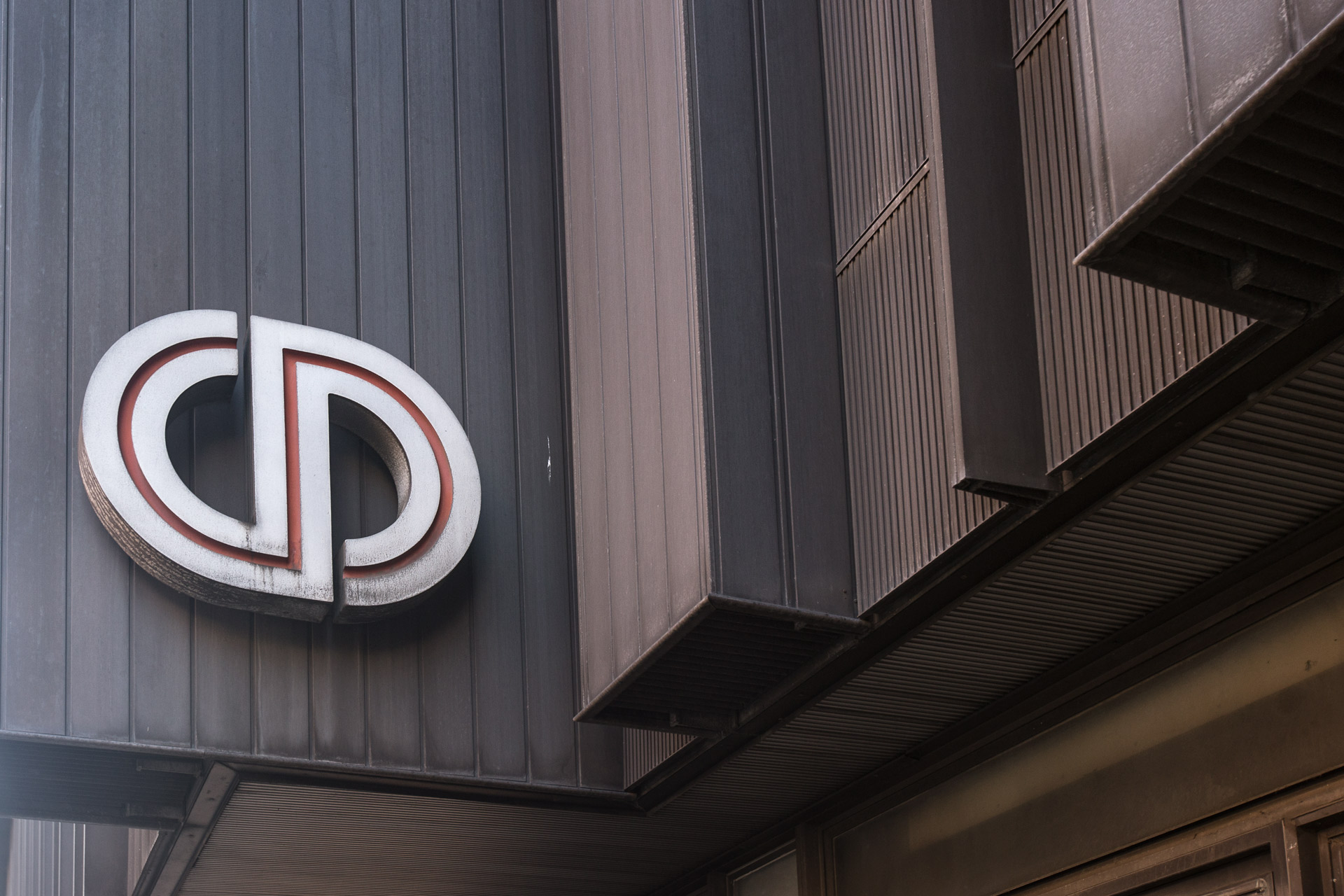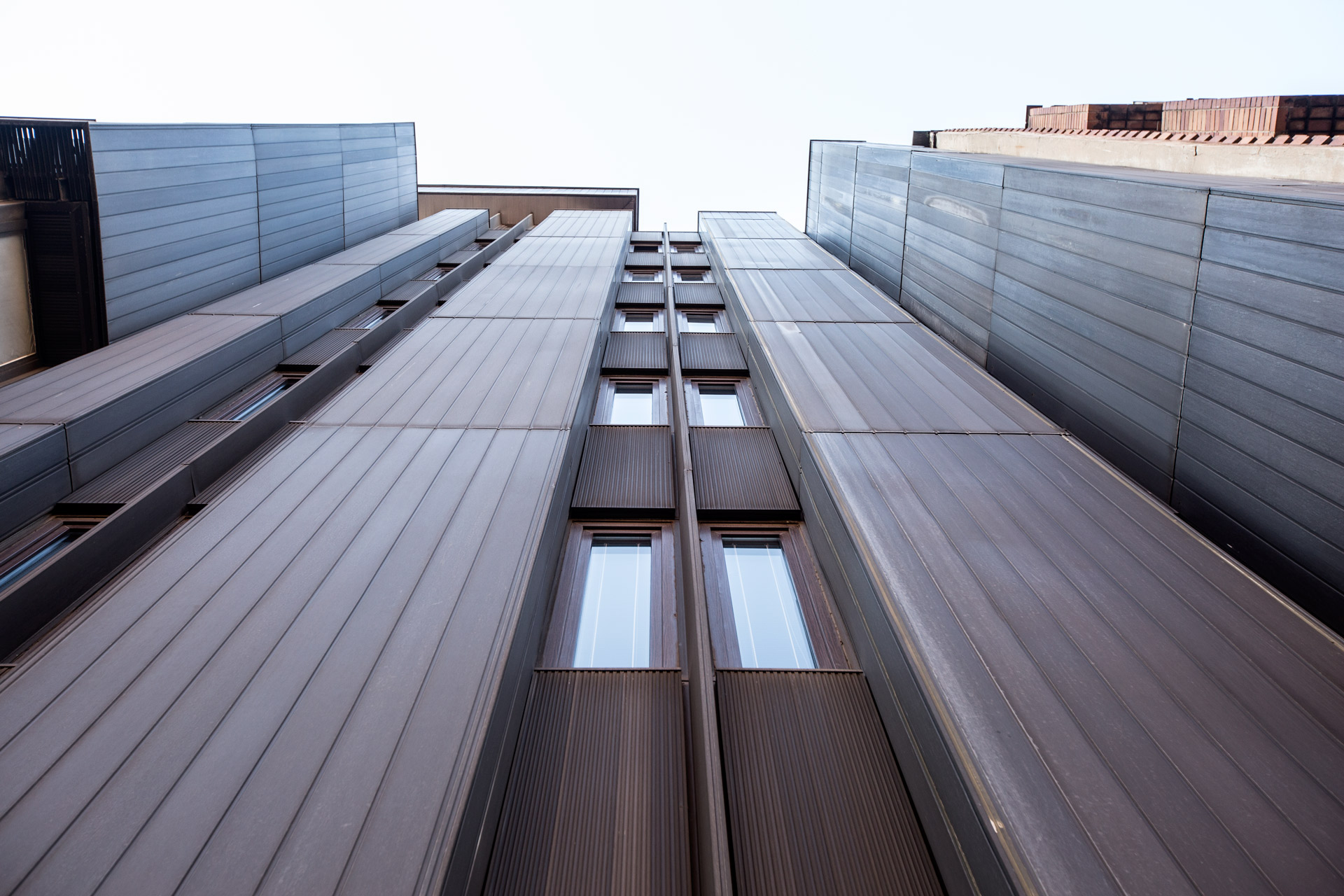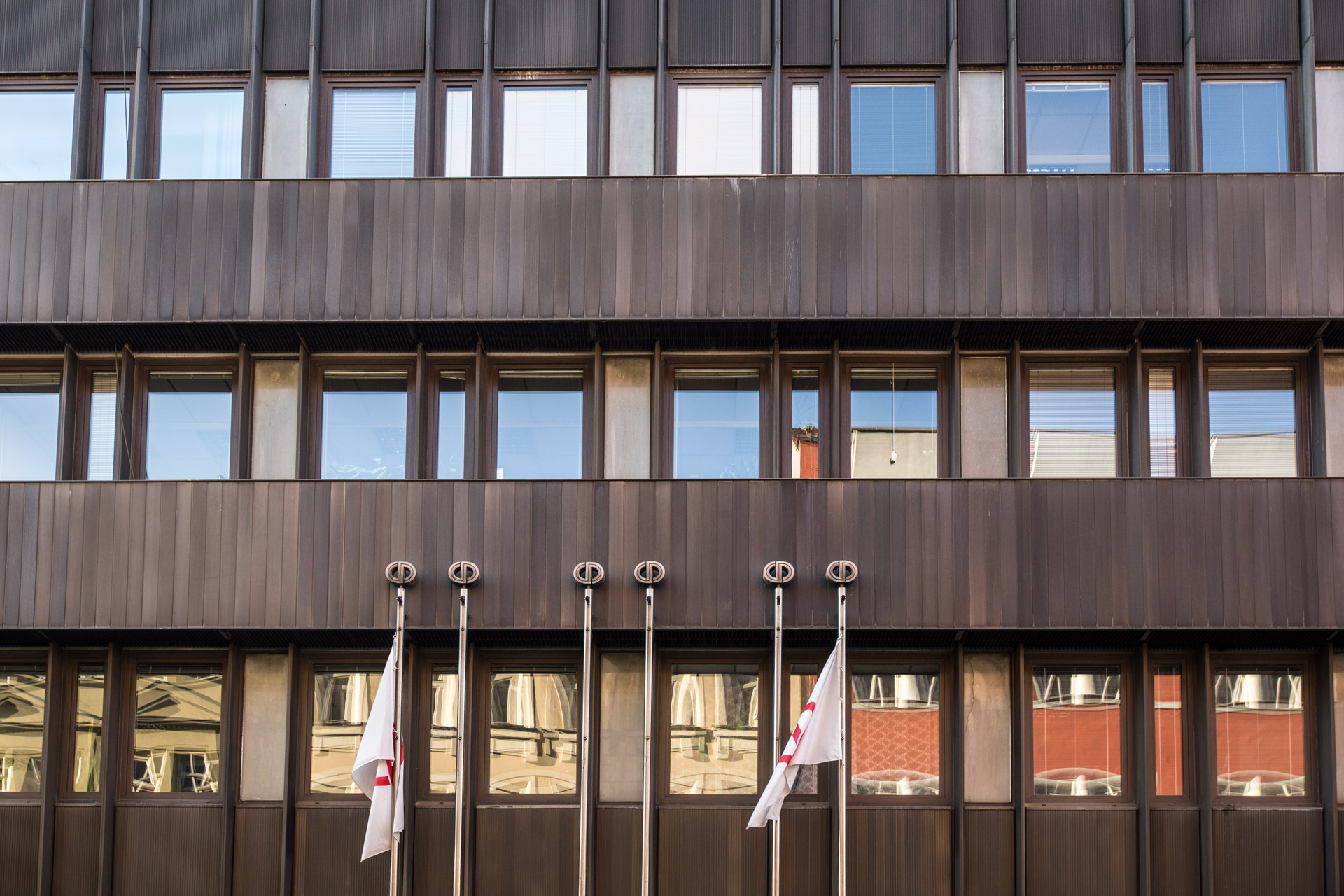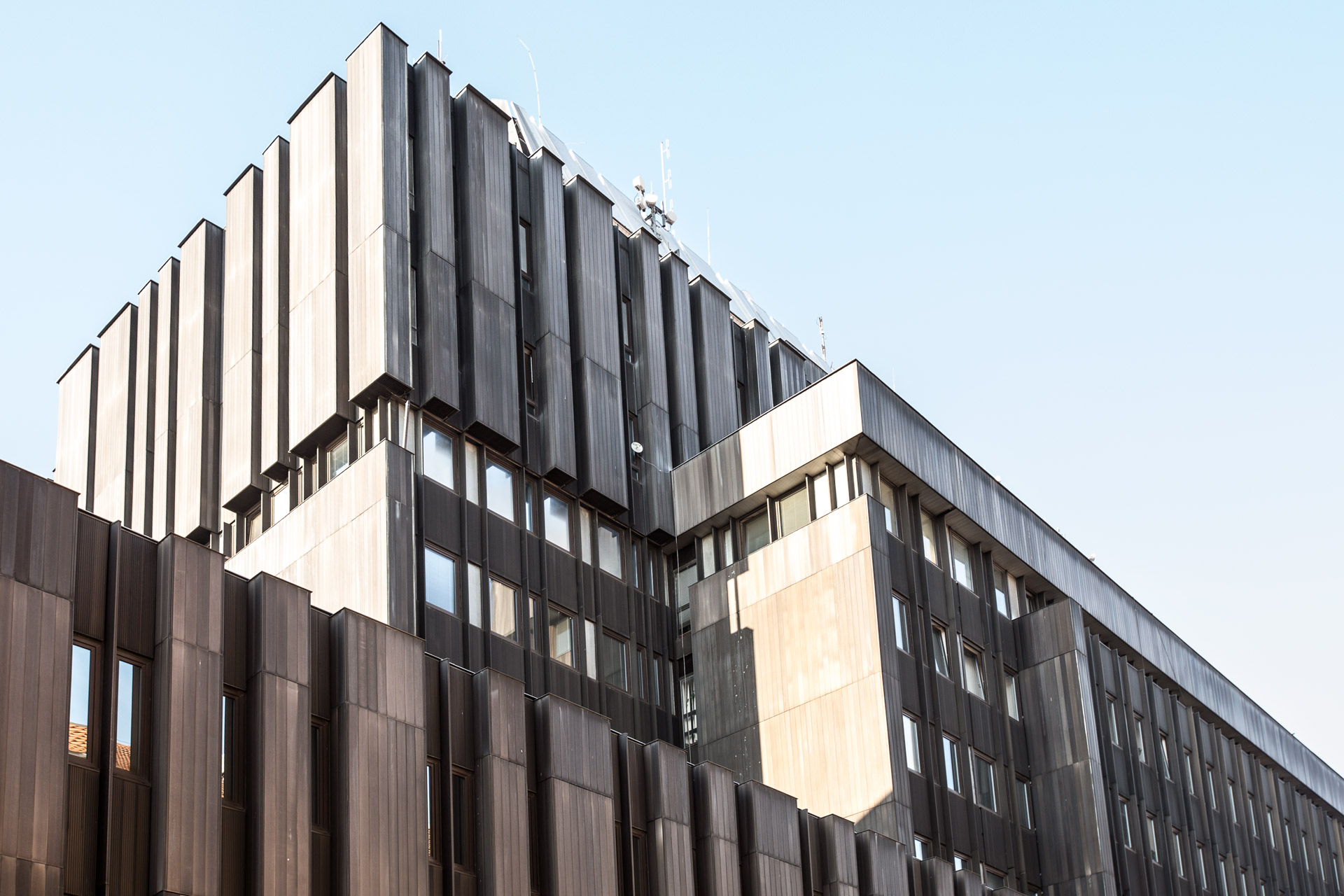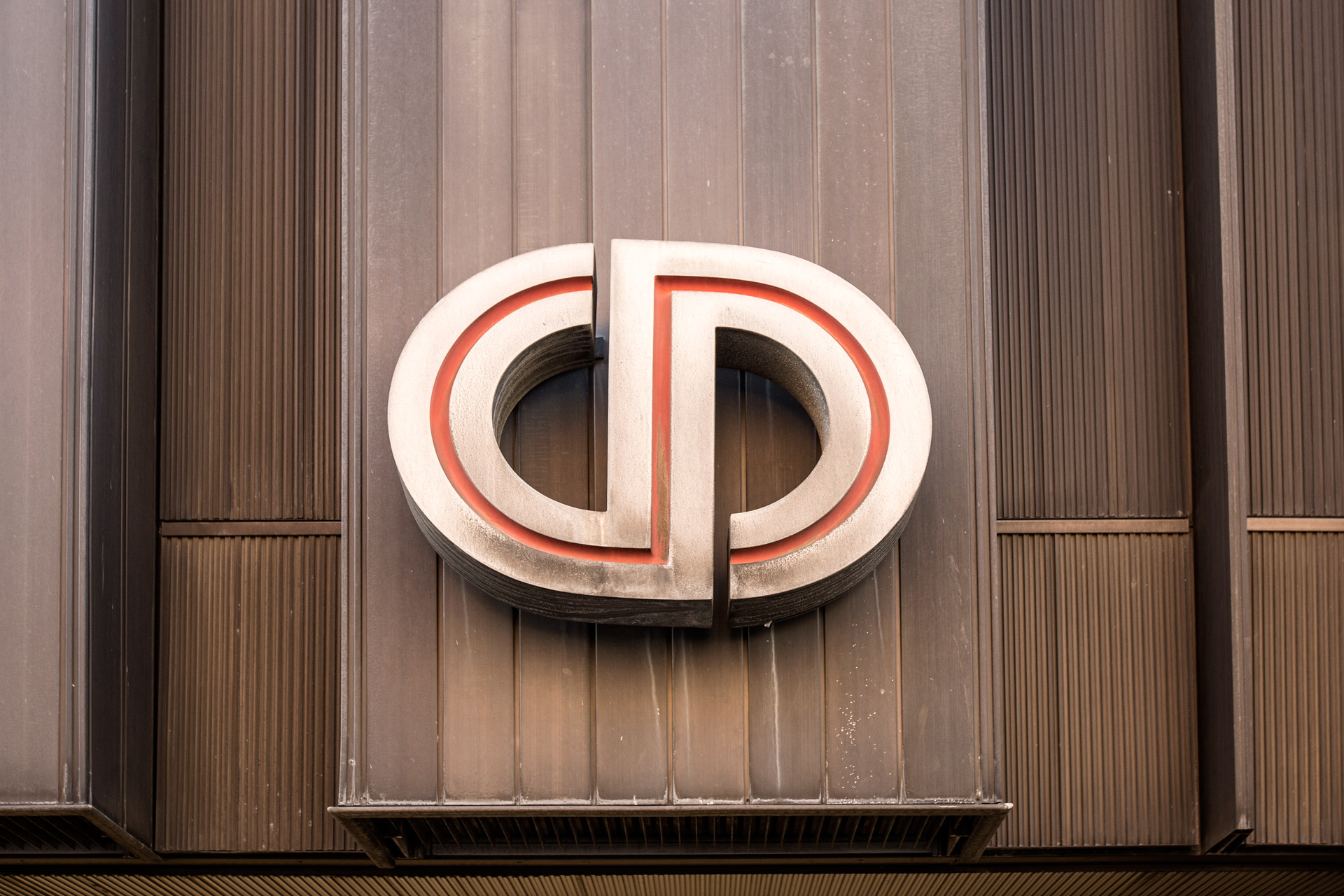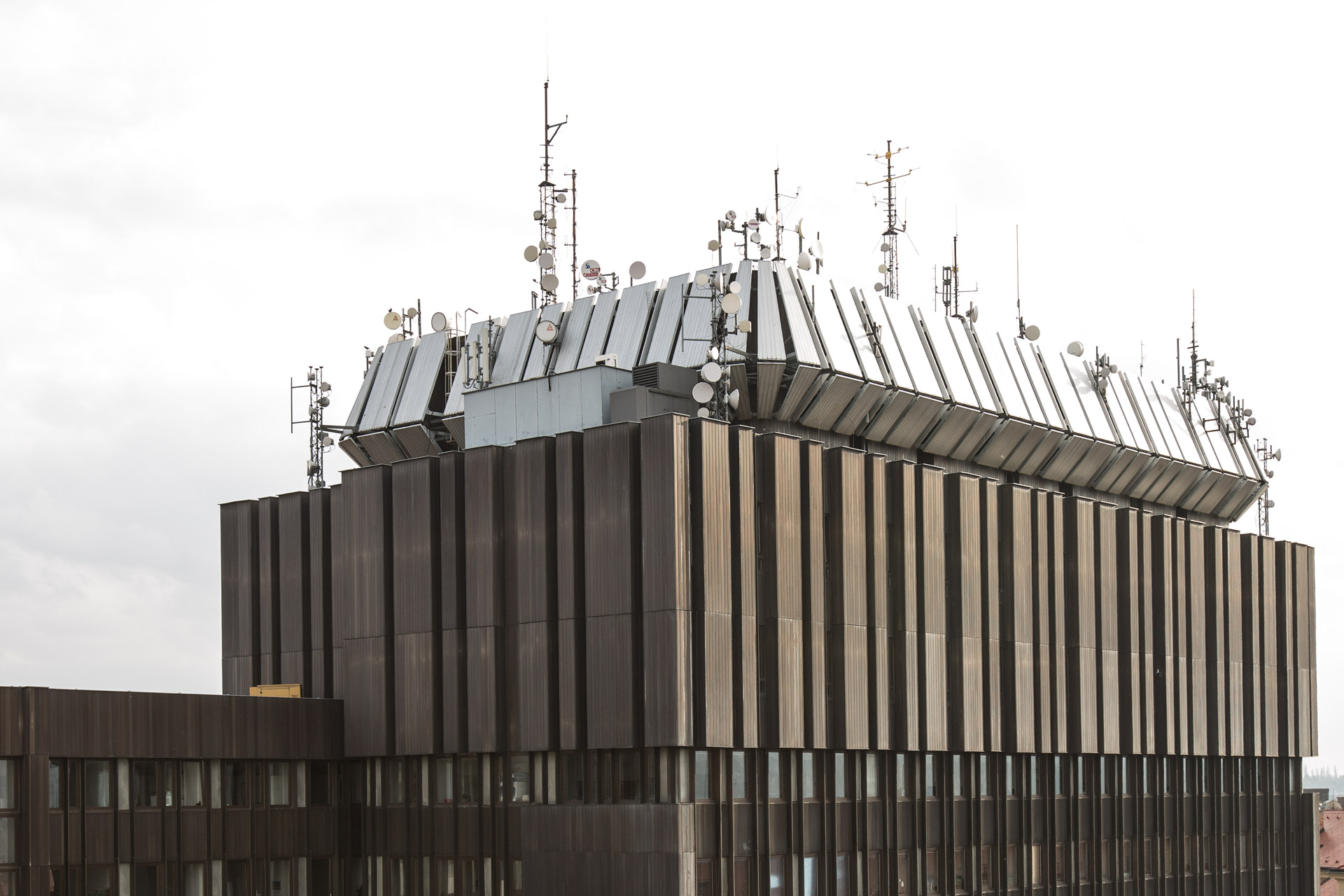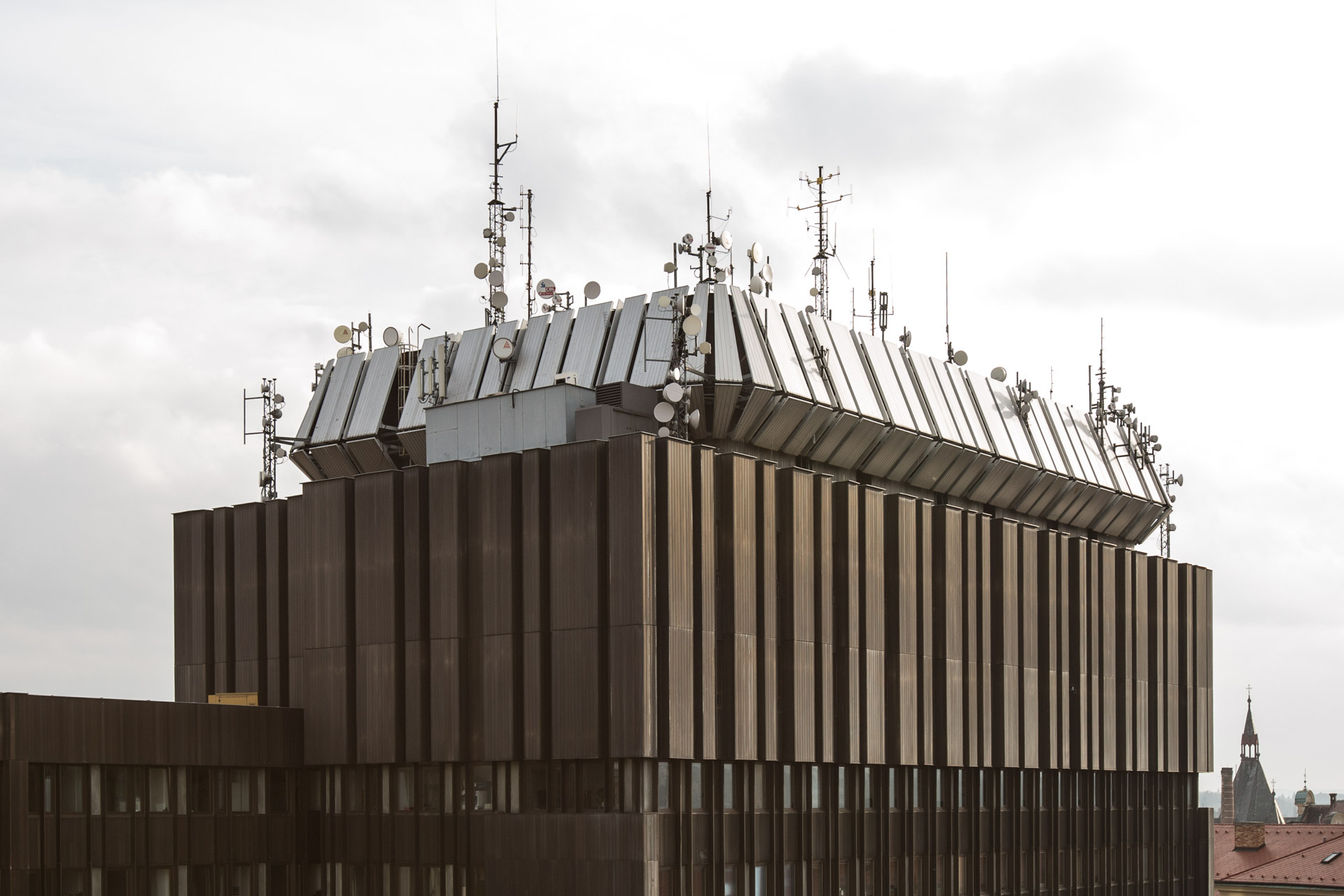CENTRÁLNÍ DISPEČINK DPP / PUBLIC TRANSPORTATION HEADQUARTERS
Vratislav Růžička, Eva Růžičková
1972 - 1978
Na Bojišti 5, Praha 2
Foto: Daniela Šrámková
Text: Veronika Vicherková
Překlad: Petr Danda
Když byl v roce 1974 zahájen provoz první trasy metra, byla jeho řídící centrála ukryta pod zemí, v jednom ze čtyř suterénů nad stanicí I.P. Pavlova. V té době však už v zející proluce v nedalekém bloku mezi ulicemi Kateřinská a Na Bojišti pomalu rostla budova, která se o čtyři roky později děsivěčernou siluetou vynořila vysoko nad dosud poklidnou hladinu pražského panoramatu. Novému objektu strategického významu ustoupilo na počátku sedmdesátých let celkem pět domů, jejichžobjem nová budova hravě nahradila, jak v půdoryse, tak do výšky. Zkušení architekti Krajského projektového ústavu, manželé Eva Růžičková a Vratislav Růžička a jejich kolegové rozčlenili táhlé průčelí do ulice Na Bojišti vertikálně i horizontálně plastickou fasádou i stupňováním hmot. Docela tak navázali na uliční frontu. Zato v zadní části pozemku, otevřeného do Kateřinské zahrady přičlenili k přednímu objektu obrovský černý maják se stříbrnou korunou, pagodu zasvěcenou temnému božstvu celoměstské dopravy. V kleci kovové fasády se ukrývá tepající srdce pražského světovládce – v různých patrech jsou rozmístěny dispečerské uzly nejen veřejné dopravy – metra, tramvajíi autobusů, ale i centrály dopravní policie nebo řízení provozu tunelů. Gigantomachie přepravního systému a její dopad na město se asi nejlépe projevila právě formou budovy, která ve své hlavní hmotě vystupuje více než o tři patra nad okolní zástavbu. Již v doběsvého vzniku vzbudila stavba značnou nevoli, ale ani Útvar hlavního architekta nedokázal razantní vstup zcela utlumit, byť jeho zásahem stavba přišla o další dvě patra, která byla v plánu.
When the first metro line was launched in 1974, its control center was hidden underground, in one of the four basements of the I.P. Pavlova station. And not far away from there, between the streets Na Bojišti and Kateřinská, formerly an abandoned lot, a new building was slowly rising up to the sky. Four years later, it surfaced high above the quiet panorama of Prague, and with its dark, terrific silhouette, changed it forever. Earlier in the 1970s, five whole buildings had to give way so this new building of strategic importance, easily surpassing them in volume and height, could grow. Together with their colleagues, the experienced architects Eva Růžičková and Vratislav Růžička, both from the Regional Design Institute, divided the long facade in Na Bojišti street into vertically and horizontally elements, and achieved a kind of plasticity through the gradation of the buildings massive volume. Thanks to this, the building quite aligns with its neighbours. On the other side though, the side facing Kateřinská park, the architects added a huge black tower topped with a silver crown, a massive temple dedicated to the dark deity of city transportations. In this metal cage, one can find the beating heart of Prague’s world ruler - located there are not only dispatching hubs of all public transportation spheres as metro, trams and buses, but also the traffic police headquarters and tunnel traffic control centres are located here. The gigantomachy of the transportation systems and its impact on the city is probably expressed best through the fact, that the main volume of the building surpasses all its neighbours by more than three floors. Already at the time of its projecting the building caused considerable amount of discomfort, and even Prague’s Head Architecture Department could not fully dampen the effects on the city, although, thanks to their intervention, the project was scaled down by two floors.
